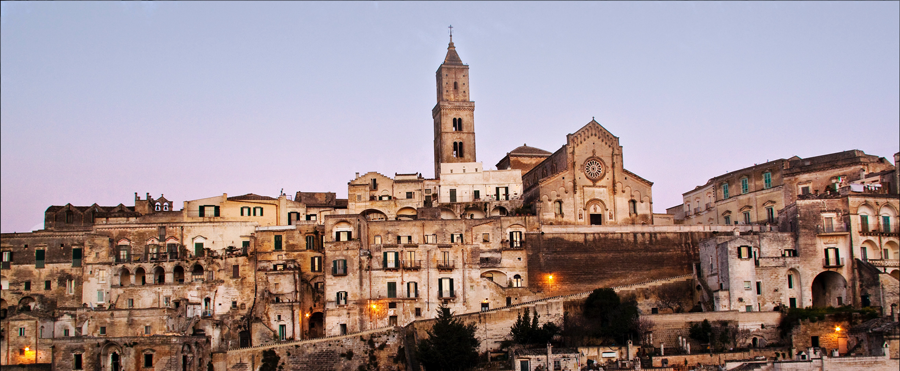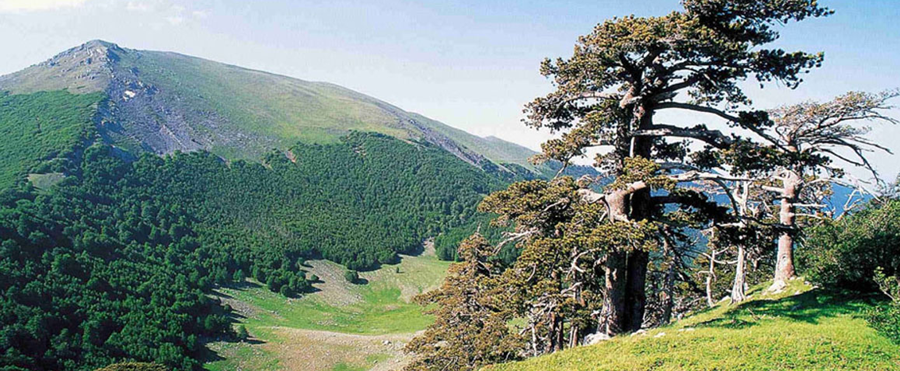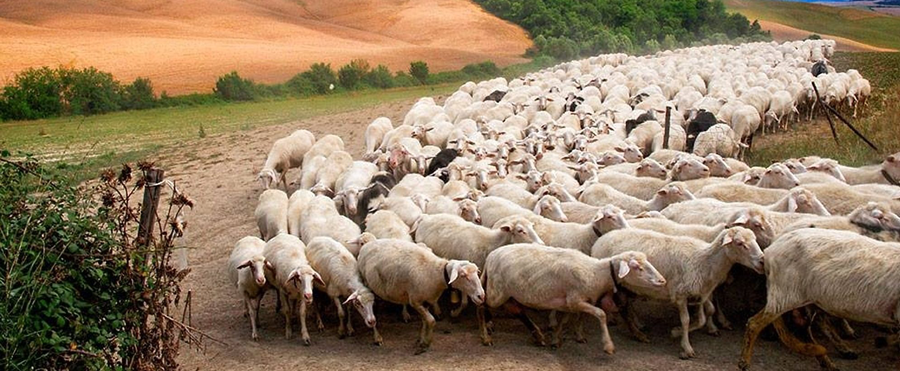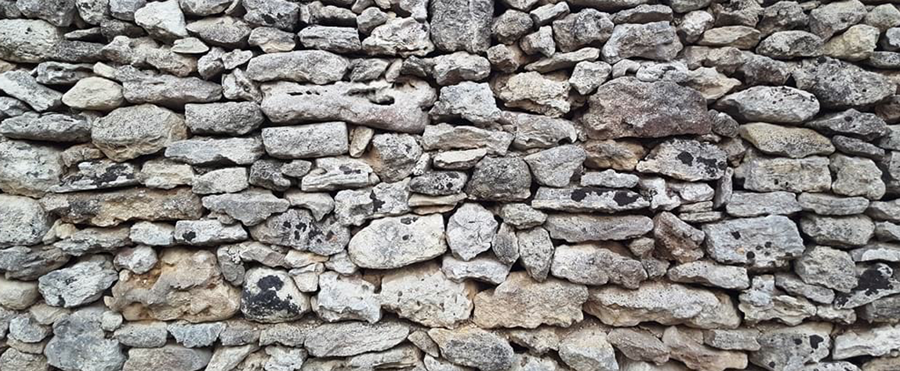In the UNESCO list of natural and cultural heritage of humanity there are many cultural, natural and intangible monuments of Southern Italy.
The position of Grottole makes this village a perfect point from which to quickly reach the rest of Basilicata, Puglia, Calabria, Campania and Molise. This proximity gives the possibility to enjoy the territory in an alternative way and to move to discover the nature, history and culture of these incredible places in the Mediterranean.
THE SASSI AND THE PARK OF THE RUPESTRIAN CHURCHES OF MATERA (distance: 30 km)

Matera is the capital of Basilicata. In the world it is known for the Sassi, the oldest part of the city that makes Matera one of the oldest cities in the world still inhabited.
The World Heritage site includes the Sassi and the Park of the Rupestrian Churches.
The houses in the Sassi are caves with different shapes and sizes. Perfectly integrated into the environment, today they present themselves as a set of houses in shades of grey and white that are barely distinguished from the rocks in which they are inserted. These typical houses also have stable, cellar and cistern.
The Park of the Rupestrian Churches, on the other hand, is a complex of houses, churches, monasteries and hermitages. It includes over 150 examples of rupestrian churches, today a sacred art heritage. The first ones are related to medieval monastic culture, starting from the eighth century. Among the Rupestrian Churches is the “Crypt of Original Sin” , considered the Sistine Chapel of the Rupestrian Churches.
CASTEL DEL MONTE (distance: 90 km)

Castel del Monte is located in the Apulian town of Andria. It was built on the initiative of Emperor Federico II di Svevia in 1240 and today represents a masterpiece of medieval military architecture.
Castel del Monte was built respecting a mathematical and astronomical precision that reflects the humanistic culture of Federico II, emperor with a vast education passionate about mathematics, philosophy and astronomy.
Even the perfectly octagonal shape of the Castle represents a highly symbolic value: it is the representation of the perfection and harmony of the forms, as well as the fusion of elements from Northern Europe, the Muslim world and classical antiquity.
THE TRULLI OF ALBEROBELLO (distance: 99 km)

In the town of Alberobello, in the south of Puglia, there are extraordinary examples of dry stone buildings: the trulli. In Alberobello there are more than 1500 of them: traditional dry stone huts with the roof formed by dry embedded slabs. This technique dates back to prehistoric times and is still used in the Apulian area of Valle d’Itria.
With a rectangular structure and a conical roof, the trulli are a highly impressive spectacle. They tell of ancient traditions and often on the roofs of the buildings there are white ash inscriptions with mythological or religious meaning.
ANCIENT AND PRIMEVAL BEECH FORESTS (distance Parco Nazionale del Gargano: 155 km)

The site of the “Ancient Primordial Beech Forests of the Carpathians and other regions of Europe” consists of 94 parts in 18 European countries.
They are an extraordinary example of forests not touched by the presence of man. Very old, developed after the end of the last ice age, today they present a great expansion thanks to the adaptability of the beech, which tolerates different climatic and geographical conditions.
The Italian beech forests included in the transnational site and easily visited from Grottole are located in the following locations: Cozzo Ferriero (Potenza) and Pollinello (Cosenza), Pollino National Park
and National Park of Gargano.
POLLINO UNESCO GLOBAL GEOPARK (distance Parco Nazionale del Pollino: 154 km)

Pollino is the largest National Park in Italy, it covers more than 192 thousand hectares of protected area.
It lies between two regions, Basilicata and Calabria. The entire area of Pollino is formed by the massif of Pollino and Orsomarso and the height of its peaks reaches 2,200 meters, boasting some of the highest ones in Southern Italy which remain snowed for long periods of the year.
Pollino is also the land of the Pino Loricato pine, the wolf, the roe deer, the golden eagle, the otter, the dolomitic rocks, the Serra Dolcedorme, the gorges, the caves, the civilization of Lucania and the Arberes minorities.
In addition to an uncontaminated nature to visit and live, this territory includes cultures and contaminations of peoples that start from the Paleolithic and show cultural stratifications, such as those given by the presence of the Greeks and the Romans and later of the Longobards, the Saracens, the Byzantines and finally the Normans and the Spanish.
CILENTO AND VALLO DI DIANO NATIONAL PARK WITH THE ARCHEOLOGICAL SITES OF PAESTUM AND VELIA AND THE CERTOSA DI PADULA (distance: 139 km)

Cilento is a territorial area of the province of Sorrento. Faces the Tyrrhenian coast south of Naples, between the Gulf of Salerno and the Gulf of Policastro.
This area is rich in settlements dating back to the Neolithic, the Bronze and Iron Age, later affected by communities of Etruscans, Greek colonizers, Lucanians and Romans.
Cilento has an enormous cultural value because it’s a crossroads of some of the most important trade routes between the Tyrrhenian Sea and the Adriatic Sea, as well as of flourishing cultures and policies that tell the territory from prehistory to the Middle Ages.
The site includes the Cilento, Vallo di Diano and Alburni National Park, the archaeological sites of Paestum and Velia and the Padula Charterhouse.
ARCHEOLOGICAL AREAS OF POMPEI, HERCULANEUM AND TORRE ANNUNZIATA (distance: 196 km, 212 km, 199 km)

The Unesco Site includes three archaeological areas: Pompeii, Herculaneum and Torre Annunziata located in the Neapolitan province. Pompeii and Herculaneum are the famous Roman cities overwhelmed by the eruption of Vesuvius on August 24, 79 AD.
Pompeii was a commercial city where it is still possible to admire the remains of the shops and is the only archaeological site in the world that manages to give a complete picture of the structure of an ancient Roman city.
Ercolano and Torre Annunziata were two vacation destinations. Both have wonderful villas where the Romans went to relax from their daily duties and the splendid frescoes of these villas testify to this opulent lifestyle enjoyed by the wealthiest classes of the Roman Empire.
HISTORIC CENTER OF NAPLES (distance: 220 km)

Naples, today the capital of the Campania region, was founded by the Greeks in 470 BC. It played a key role in the transmission of Greek and Roman culture and was an important port city of the Mediterranean Sea. Over the centuries Naples has experienced the influence of the Byzantine Empire, the Normans, and the Angevin, Aragonese and Bourbon dynasties.
The whole city and its historic center tell of these contaminations of cultures and architectural styles. Magnificent buildings such as the Royal Palace (???), Castel dell’Ovo and the many churches tell the artistic, scientific and technological developments of this historic city.
Evocative and characteristic, the alleys of Naples are the representation of the pulsating culture of these people so contaminated but with a strong Neapolitan identity.
AMALFI COAST (distance: 191 km)

The Amalfi Coast is part of the province of Salerno and is part of the Tyrrhenian coast of southern Italy south of Naples.
It is characterized by a peculiar beauty given by the terraces of vineyards and orchards that frame small towns of great artistic value, such as Amalfi and Ravello. The area of the UNESCO site includes twelve municipalities with many Roman villas, historical testimonies and precious handicrafts.
A unique territory, a wonderful example of the Mediterranean landscape, where the crystalline waters and the yellow of lemons are protagonists.
PATRIMONI IMMATERIALI
TRANSHUMANCE

Transhumance, included in 2019 in the list of Intangible Cultural Heritage starting from a transnational application, is an ancient practice of pastoralism that consists in the seasonal migration of livestock in the Alps and in the Mediterranean area. Two types of transhumances have been recognized by UNESCO: horizontal transhumance, in plain or plateau regions, and the vertical one which characterizes the mountain regions.
Tradition that derives from prehistoric times and still bears witness to a balanced relationship between man and nature and a sustainable use of natural resources, transhumance now has a considerable cultural importance. In fact, it has shaped relations among communities, animals and ecosystems, also creating rituals and social practices that populate summer and autumn and every year they bear witness to the relevance of a practice that lasts for centuries.
ART OF NEAPOLITAN ‘PIZZAIUOLO’

The art of the Neapolitan ‘Pizzaiuolo is a culinary practice born in Naples and formed by different phases including the preparation of the dough, a rotatory movement by the pizzaiolo and the baking in a wood-fired oven. In Naples today live and work about 3000 pizzaioli divided in categories according to their experience and their skills. The Neapolitan Academy of Pizza makers organizes courses focused on the history, instruments and the technique of this art in order to continue to ensure its viability but the art is now widespread also in the houses of the population.
The title of intangible cultural heritage of UNESCO recognizes the art of the Neapolitan Pizzaiolo as an expression of a unique culture and allows this food production can be perceived as a brand of Italianness in the world.
ART OF DRY STONE WALLING

The art of dry stone walling is the art of building by stacking stones upon each other, without using any other materials except sometimes dry soil. The stability of dry stone walls is ensured through the careful selection of the stones and their precise placement. They are widespread in rural areas and mainly in steep terrains, used for breeding, agriculture or as housing and witness practices, used since prehistoric times, of organization of the spaces thanks to local natural resources. Dry stone walls are important in preventing landslides, floods and avalanches and in combating erosion and desertification of the land. They also strengthen biodiversity and create adequate microclimatic conditions for agriculture, reflecting a balanced relationship with the environment and a harmonious relationship between human beings and nature.
MEDITERRANEAN DIET

The Mediterranean Diet is a lifestyle that includes skills, knowledge, rituals, symbols and traditions concerning crops, harvesting, fishing, breeding, conservation, cooking and, above all, sharing and consumption of food. It plays a fundamental role in rites, celebrations and cultural events while also enhancing local crafts
The designation Mediterranean Diet is a new label for an ancient tradition: it was born in the seventies by the American scientists Ancel and Margaret Keys with the aim of indicating a traditional lifestyle, made not only of eating habits but also of social customs and local productions, which they studied in the Mediterranean area and which proved responsible for the longevity of the populations of southern Italy.
The Mediterranean Diet is today a kind of philosophy of life that can help create a more sustainable tomorrow and that, starting from the local level, can lead to changes on a global scale.

